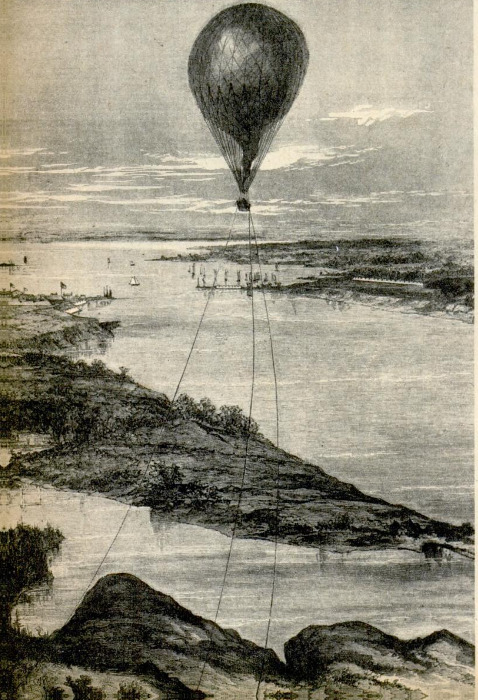Air war
Item
-
Title (Dublin Core)
-
Air war
-
Article Title and/or Image Caption (Dublin Core)
-
Air war
-
extracted text (Extract Text)
-
IN AMERICA was born the first successful
powered airplane, a brittle, kitelike con-"
trivance that could be flown only under the
most benign weather conditions. Less than
40 years later it introduced into warfare
two factors new to the annals of military
operations: major campaigns waged in a
third dimension, and the envelopment of
hundreds of millions of civilians in the tide
of combat.
Tt was with sardonic humor that British
civilians said to soldiers off to the front lines
of battle, “Coward!” For the war front was
in London. It was in Berlin, Tokyo, Rotter-
dam, Vienna, Rome, and Manila. The war
front was everywhere. Airpower had put
it there.
The evolution of American airpower, as
it is reflected in the growth of Army avia-
tion, is associated intimately with the de-
velopment of heavy bombardment aircraft,
fat-bellied with bombs. The Superfortress
is a gun platform. Her
bombs are artillery shells
that can be projected 1,500
miles to help achieve the
purpose of all warfare—
breaking the enemy's will
to resist.
Concurrent with the de-
velopment of the heavy
bomber has been that of
lighter bombardment units
the medium bomber and
the dive bomber—and the
fighter plane, roving the
skies to shepherd the
bombers as destroyers
rove the seas to protect
the aircraft carrier and
the battleship.
The compression of time
between the flight of the
first powered airplane and
the initial salvo of Super-
fortress bombs on Tokyo
is one of the greatest feats
of engineering in the his-
tory of man. It was al-
most 600 years from the
longbowmen of Créey to
the artillery barrages of
World War I It was a
brief 41 years from that
first 120-foot. flight of the
Wright Brothers at Kitty
Hawk, N. C, to the 3,000-
mile round-trip flights of
the Superfortresses to
Tokyo from the Marianas.
The history of the AAF
really starts not with the year 1909 and the
delivery of the Army's first plane, but with
the Civil War. The first “air force” was a
covey of balloons. From balloon perches,
Union observers counted the Confederates’
tent lights at night and so estimated their
strength. Union balloonists “spotted” ar-
tillery fire. Newspapers and magazines
wrote glowingly of the “sailings” of these
“generals of the skies.” Military ballooning
drew the first “antiaircraft” fire. From it
came the first “bombproof shelters” —dug-
outs protected by sandbags to permit bal-
loon crews to escape the missiles directed
at the gas bags.
The Army's interest in heavier-than-air
flight was shown in 1898 and 1899, when
the War Department subsidized Samuel
Pierpont Langley with $50,000 to do experi-
mental work on an airplane. After several
years of effort, in the course of which
Charles M. Manly developed the forerunner
of today's radial aircraft engines, Langley
failed to fly. Less than two weeks later,
on December 17, 1908, Orville and Wilbur
Wright did fly.
The Army accepted its first heavier-than-
air flying machine ‘in 1909. The specifica-
tions called for a speed of 40 miles an hour.
The Wrights exceeded that by 2 1/2 miles.
In 1911 Army aviation, under the Signal
Corps, consisted of five planes, three built
by the Wrights and two by that other hardy
pioneer, Glenn Curtiss. In 1912 the rating
of Military Aviator was established, and in
that same year a youngster named Henry
H. Arnold set an altitude record of 6,540
feet and won the first Mackay Trophy for a
speed of 43 miles an hour over a’ 30-mile
course.
Before war swept Europe in 1914, the
Army's two dozen pilots knew they had
their hands on a new weapon. They tested
a bombsight. In newspaper interviews they
pictured a misty future in which whole
battles would be fought in the air. Their
imaginations were a bit ahead of the design-
ers. Of eight planes sent to Mexico with
-
Language (Dublin Core)
-
eng
-
Date Issued (Dublin Core)
-
1945-08
-
pages (Bibliographic Ontology)
-
84-90
-
Rights (Dublin Core)
-
Public domain
-
Archived by (Dublin Core)
-
Sami Akbiyik
-
Marco Bortolami (editor)
 Popular Science Monthly, v. 147, n. 2, 1945
Popular Science Monthly, v. 147, n. 2, 1945
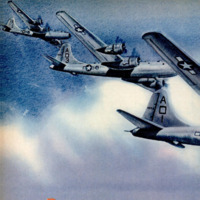 Screenshot 2023-01-20 123137.png
Screenshot 2023-01-20 123137.png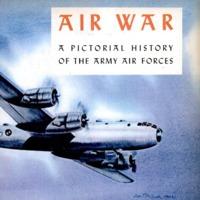 Screenshot 2023-01-20 123149.png
Screenshot 2023-01-20 123149.png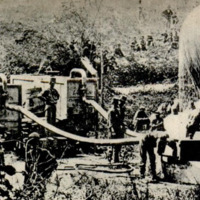 Screenshot 2023-01-20 123239.png
Screenshot 2023-01-20 123239.png Screenshot 2023-01-20 123250.png
Screenshot 2023-01-20 123250.png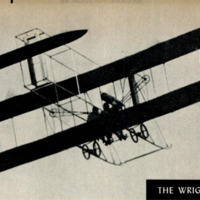 Screenshot 2023-01-20 123302.png
Screenshot 2023-01-20 123302.png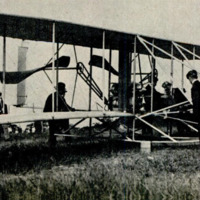 Screenshot 2023-01-20 123312.png
Screenshot 2023-01-20 123312.png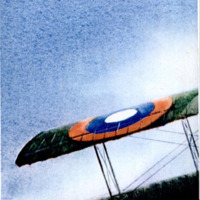 Screenshot 2023-01-20 123325.png
Screenshot 2023-01-20 123325.png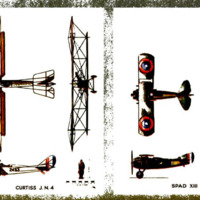 Screenshot 2023-01-20 123336.png
Screenshot 2023-01-20 123336.png content (1).jfif
content (1).jfif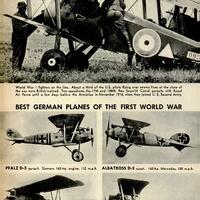 content (2).jfif
content (2).jfif



